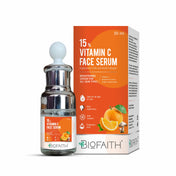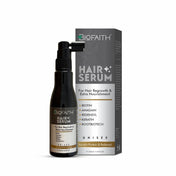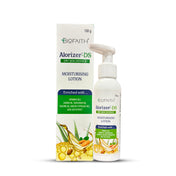Salicylic acid is a powerhouse in skincare. It's renowned for being very effective on multiple skin problems. This beta hydroxy acid (BHA) is commonly used in products that target the face and body to offer all the benefits that can transform the skin. Here's why salicylic acid is essential and how to use it effectively.
Benefits of Salicylic Acid
-
Exfoliation: Salicylic acid is a chemical exfoliator; it may penetrate into the pores and break down dead skin cells along with other debris. This, in turn, helps keep the skin smooth and prevents clogging.
-
Acne Treatment: Salicylic acid is very renowned for helping in the war against acne because of its pore-unclogging and inflammation reduction properties. It works greatly in treating blackheads and whiteheads.
-
Oil Control: Since salicylic acid is oil-soluble, it allows being transported inside oily skin and can reduce the production of sebum, making it the go-to for people with oily or combination skin.
-
Anti-Inflammatory Properties: Being an anti-inflammatory agent, it can help soothe skin and reduce redness, making it effective for conditions like rosacea.
-
Skin Renewal: By nature of the promotion of the shedding of dead skin cells, salicylic acid encourages new skin to grow back, hence the healthier and more glowing skin complexion.
Recommended Amounts in Skin Products
The concentration of salicylic acid in skincare products depends on the use of the product and the area where it is being applied.
-
Face Products: In the face cleanser, toner, and moisturizer, day-to-day recommended usage for salicylic acid is between 0.5% to 2%. Higher dosages can be applied using spot treatments but the caution remains in applying it in a manner where it does not pose any irritation.
-
Body Products: Nearly all body washes and lotions that are designed to address body acne contain one to two percent concentrations of it.
How to Apply Salicylic Acid
-
Cleansers: Salicylic acid in the form of a face wash should be used daily or twice a day, which helps in cleansing the pores and avoiding the incidence of acne. In case of sensitive skin, opt for lower concentrations.
-
Toners: After cleansing, apply a salicylic acid toner to the skin for further exfoliation and balancing. This removes any last traces of dirt and residue from the skin so that the moisturizer can fully penetrate.
-
Spot Treatments: Use a higher concentration of salicylic acid spot treatment on actual blemishes. Apply very lightly and don't overdo it to prevent irritation.
-
Moisturizers: Use a salicylic acid moisturizer to keep your skin hydrated and clear at the same time. Ideal for oily skin.
-
Body Washes and Lotions: Use the salicylic acid-infused body washes and lotions to take care of those areas of your body that have a tendency to form acne, like the back and chest. Regularly use it; it would help in keeping these areas clean and smooth.
How to Use Salicylic Acid
Patch Test: Always conduct a patch test before introducing a new product into your routine to ensure you don't have an adverse reaction.
-
Start Slow: If you are a beginner to salicylic acid, start with a smaller concentration and gradually increase as your skin gets used to it.
-
Sun Protection: It is important to apply sunscreen as your skin becomes more sensitive to sunlight when you use salicylic acid.
-
Don't Overdo It: Excessive use of salicylic acid results in dryness and irritation. Stick to what is recommended with respect to the guidelines for usage, and listen to your skin.
Conclusion
Salicylic acid is an all-around great ingredient for so many different skin concerns, whether you're dealing with acne, enlarged pores, or a rough texture. Get skin that's clearer, smoother, and more radiant than ever by applying just the right amount in your routine. Always follow product instructions and consult with a dermatologist if you have any questions or concerns about using salicylic acid.





